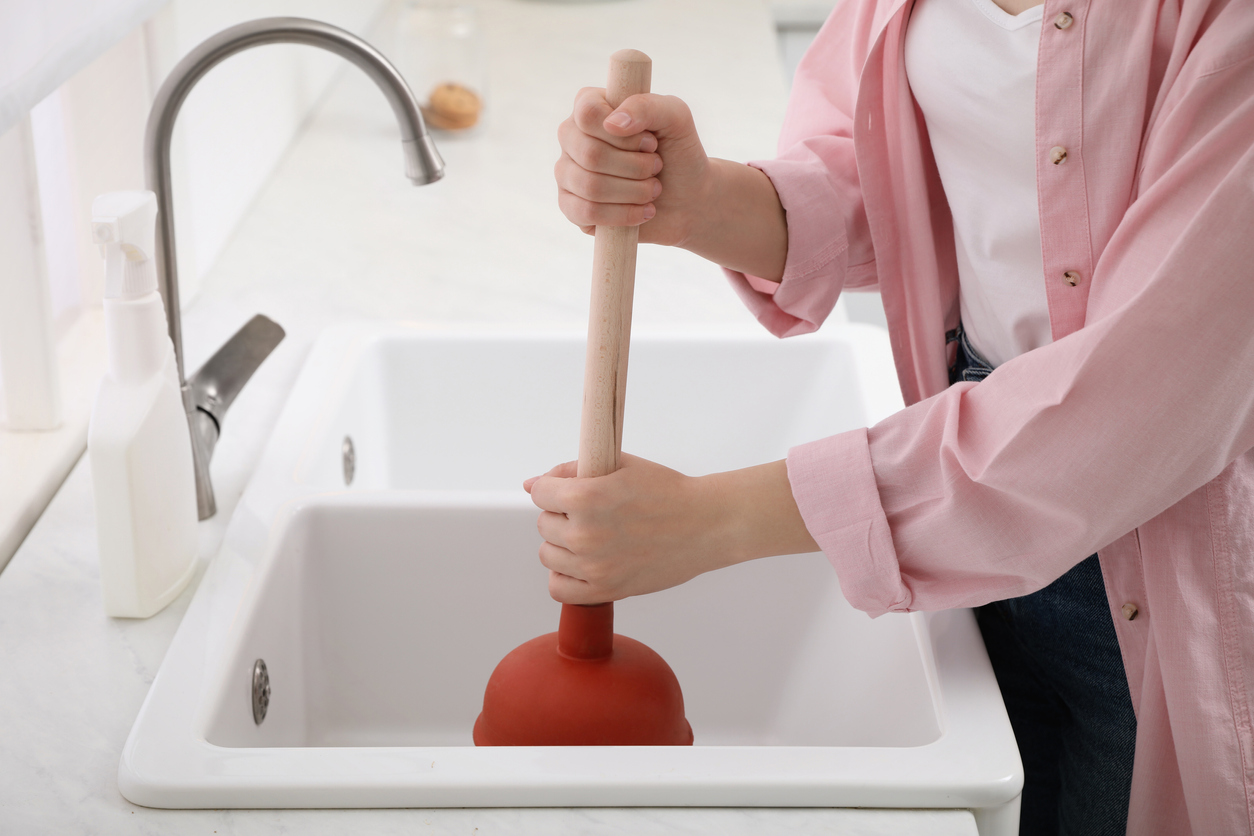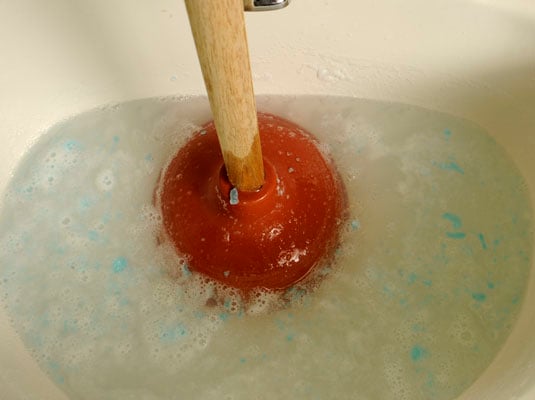Almost everyone is bound to have his or her own perception about How To Use Your Toilet Plunger Correctly in 5 Easy Steps.

Intro
Correct upkeep of family drains is vital for stopping blockages and guaranteeing smooth water flow. Among the secret tools in every house owner's toolkit is the bettor, alongside different drain cleansers created to deal with stubborn clogs properly. This post explores just how to utilize bettors and drain cleansers successfully to keep your drains moving easily.
Area 1: Comprehending Bettors
Types of Plungers
There are numerous types of plungers readily available, each developed for various types of drains and blocks. One of the most common types include cup bettors, flange bettors, and accordion bettors.
How Plungers Work
Bettors work with the principle of producing stress and suction to displace obstructions. When properly applied over a drain, they produce a vacuum cleaner that can take out particles or separate clogs.
Picking the Right Bettor
Picking the appropriate bettor relies on the sort of drainpipe and the nature of the obstruction. Mug bettors are suitable for sinks and bathtubs, while flange plungers are better suited for toilets as a result of their layout.
Typical Errors with Plungers
Avoiding these blunders makes sure efficient plunging: improper seal around the drain, insufficient force, and unclear surrounding debris.
Section 2: Using Plungers Properly
Preparation
Prior to plunging, guarantee the plunger covers the drain completely and develops a tight seal. Clear any type of visible debris around the drainpipe opening.
Method
Beginning with gentle diving motions to construct suction. Increase pressure progressively, using a constant rhythm. Repeat as necessary up until the drainpipe clears.
Fixing Tips
If diving doesn't work, try readjusting the seal, using petroleum jelly for a much better seal, or utilizing a various sort of plunger.
Section 3: Comprehending Drainpipe Cleaning Company
Sorts Of Drainpipe Cleaners
Drain cleaners can be chemical or enzymatic. Chemical cleaners use strong chemicals to dissolve clogs, while enzymatic cleaners use all-natural enzymes to break down raw material.
Just How Drainpipe Cleaning Company Job
Chemical cleaners react with clogs to dissolve them, while chemical cleansers break down organic materials like hair and oil without damaging pipelines.
Security Considerations
Constantly use gloves and eye protection when making use of chemical drain cleaners. Make certain appropriate ventilation and adhere to maker instructions very carefully.
Eco-Friendly Alternatives
Think about using vinegar and cooking soda or enzyme-based cleansers for environmentally friendly alternatives that are much safer for pipelines and the environment.
Area 4: Using Drain Cleaning Company Efficiently
Application Strategies
Pour chemical cleaners straight right into the drain opening. Enable them to benefit the recommended time before purging with warm water. Chemical cleaners ought to rest over night.
Precautions
Avoid mixing different kinds of cleansers, as this can generate poisonous fumes. Never use chemical cleaners along with a plunger, as splashing can happen.
Dealing With Stubborn Blockages
For consistent blockages, consider using a plumbing serpent or calling a specialist plumbing professional to stop damage to pipes.
Conclusion
Finally, recognizing exactly how to use bettors and drainpipe cleaners effectively is crucial for preserving healthy pipes systems. By selecting the right tools and methods, property owners can take on minor obstructions and stop major pipes issues down the line.
How To Properly Use A Plumbing Snake To Clear Drains
When any drain clogs in our home arise, we tend to gravitate toward the plunger and little else. In cases where the plunger and its vacuum-created pressure are not able to clear clogs, many immediately move to harmful chemicals or simply call their plumber to fix the issue.
we’re happy to help with all drain cleaning needs and concerns. This includes informing you on a few other home remedies you may have at your disposal for minor to moderate clogs, one of which is the use of a plumbing snake. Many people have never used one of these before – let’s go over the steps to take when your drain clogs and you have a plumbing snake available.
Attempt Plunger Use
The first step here, as we noted above, should indeed be to grab your plunger when you notice a drain clog and attempt to resolve it this way. If you’re unsure how to use a particular type of plunger, our plumbers can answer any questions you have. If this doesn’t do the trick, however, you move on to the snake.
Locate And Prepare Snake
A plumbing snake is a metal or plastic device that’s generally about a quarter of an inch thick. It’s design with significant extensions, meant to reach down into your clogged drain and push the clog out. Snakes also contain drain augers that will latch onto and push stubborn blockages.
If your plunger doesn’t clear a clog, locate your snake and bring it to the drain in question. We also recommend keeping a bucket nearby to collect the clog once you pull it out, plus we’d advise wearing goggles and possibly protective gloves.
Feed Snake
Once you’re ready to go, feed the snake slowly down the drain, using the crank device it comes with to keep it moving until it finds the clog. Once this happens, much of the clog will be latched onto the coil so you can pull it out, while the rest will simply break up and flow downward.
Detach Debris
Remove the snake slowly from the drain, and once you’ve done so, pick off any debris that’s stuck to the coil. This is another area where wearing gloves is a must.
Flush Drain
Finally, take a few minutes to ensure the snake has done its job correctly. If you’ve been using it on a toilet, flush the toilet a couple times and make sure everything flows well. If you’ve used it on a different drain, flush it with some room temperature water.
https://www.mybuddytheplumber.com/blog/how-to-properly-use-a-plumbing-snake-to-clear-drains/

Application Strategies
Pour chemical cleaners straight right into the drain opening. Enable them to benefit the recommended time before purging with warm water. Chemical cleaners ought to rest over night.
Precautions
Avoid mixing different kinds of cleansers, as this can generate poisonous fumes. Never use chemical cleaners along with a plunger, as splashing can happen.
Dealing With Stubborn Blockages
For consistent blockages, consider using a plumbing serpent or calling a specialist plumbing professional to stop damage to pipes.
Conclusion
Finally, recognizing exactly how to use bettors and drainpipe cleaners effectively is crucial for preserving healthy pipes systems. By selecting the right tools and methods, property owners can take on minor obstructions and stop major pipes issues down the line.
How To Properly Use A Plumbing Snake To Clear Drains
When any drain clogs in our home arise, we tend to gravitate toward the plunger and little else. In cases where the plunger and its vacuum-created pressure are not able to clear clogs, many immediately move to harmful chemicals or simply call their plumber to fix the issue.
we’re happy to help with all drain cleaning needs and concerns. This includes informing you on a few other home remedies you may have at your disposal for minor to moderate clogs, one of which is the use of a plumbing snake. Many people have never used one of these before – let’s go over the steps to take when your drain clogs and you have a plumbing snake available.
Attempt Plunger Use
The first step here, as we noted above, should indeed be to grab your plunger when you notice a drain clog and attempt to resolve it this way. If you’re unsure how to use a particular type of plunger, our plumbers can answer any questions you have. If this doesn’t do the trick, however, you move on to the snake.
Locate And Prepare Snake
A plumbing snake is a metal or plastic device that’s generally about a quarter of an inch thick. It’s design with significant extensions, meant to reach down into your clogged drain and push the clog out. Snakes also contain drain augers that will latch onto and push stubborn blockages.
If your plunger doesn’t clear a clog, locate your snake and bring it to the drain in question. We also recommend keeping a bucket nearby to collect the clog once you pull it out, plus we’d advise wearing goggles and possibly protective gloves.
Feed Snake
Once you’re ready to go, feed the snake slowly down the drain, using the crank device it comes with to keep it moving until it finds the clog. Once this happens, much of the clog will be latched onto the coil so you can pull it out, while the rest will simply break up and flow downward.
Detach Debris
Remove the snake slowly from the drain, and once you’ve done so, pick off any debris that’s stuck to the coil. This is another area where wearing gloves is a must.
Flush Drain
Finally, take a few minutes to ensure the snake has done its job correctly. If you’ve been using it on a toilet, flush the toilet a couple times and make sure everything flows well. If you’ve used it on a different drain, flush it with some room temperature water.
https://www.mybuddytheplumber.com/blog/how-to-properly-use-a-plumbing-snake-to-clear-drains/

I recently found that content about Here's How to Correctly Use a Toilet Plunger when exploring the internet. Do you know another person who is fascinated about the subject? Why not share it. Thanks a lot for your time invested reading it.
Click Here